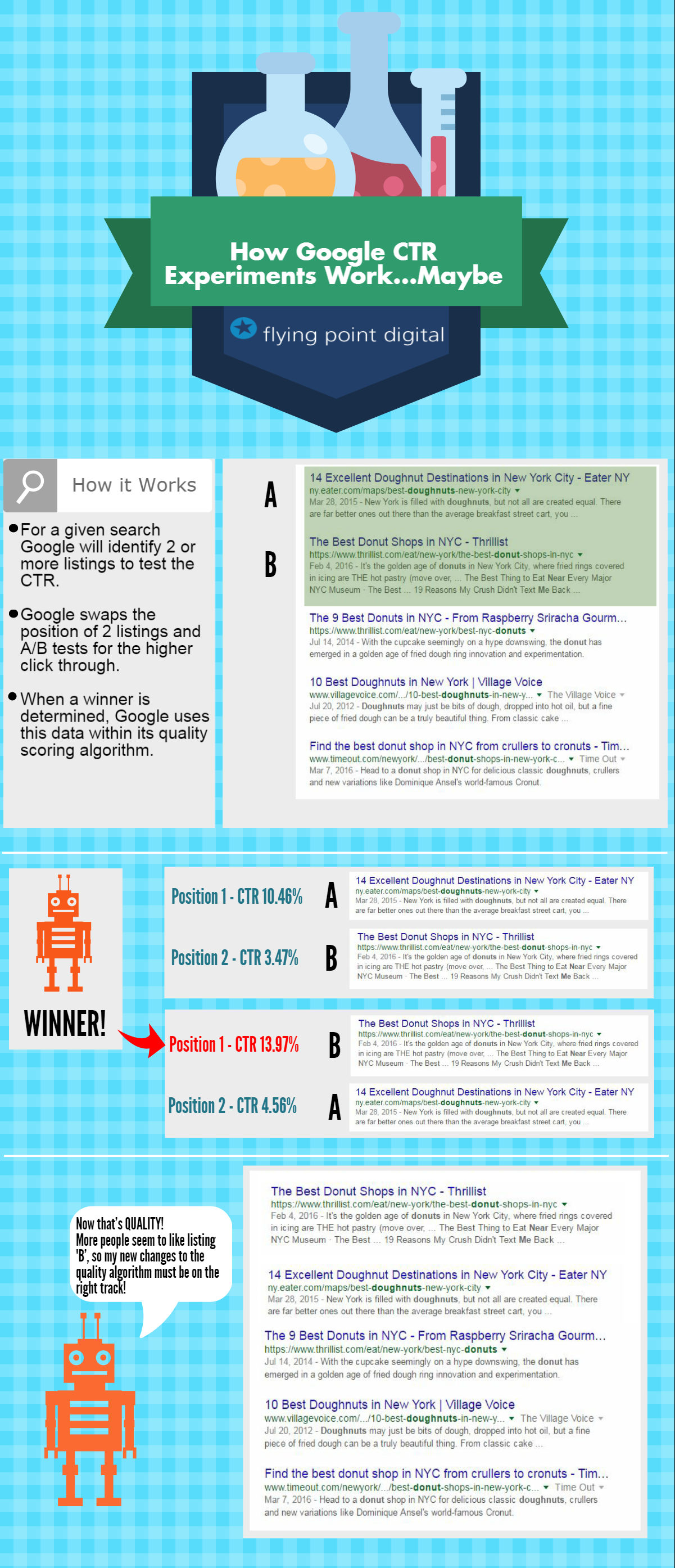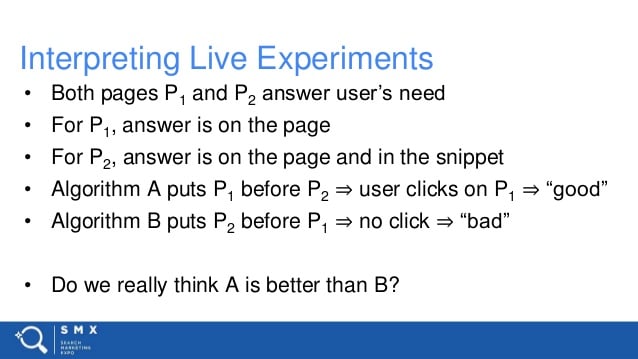Ever wonder why you're not getting enough traffic to your site, even though you're ranking for key terms? If you're not actively auditing your CTR (click-through rate) within Google Search Console, you are probably missing out on some traffic. At Flying Point Digital we regularly see search results at position one in organic not even getting 8% of the CTR for a given term, which is quite a bit lower than the 20%-30% figures our industry regularly cites. Not only could your website be missing out on potential conversions, you could start dropping out of position all together if you don't being paying attention to your click-through data.
Is CTR a Ranking Factor?
For a long time SEOs have theorized that CTR was indeed a ranking factor. After all, it makes a whole lot of sense. Imagine your job is to sit in a room with a stack of index cards. People come up to you to ask a question. You have over 100 answers, but can only show them 10. Each time you put out 10 cards for the same question, there are a few cards that NO ONE ever chooses. Would you keep putting out those cards? No, of course not. This is at the root of why many SEOs (including myself) at least have thought that CTR must be connected to ranking.
At SMX West, the theory that CTR is a ranking factor was explained a little further by Paul Haahr, a Google Ranking Engineer. Haahr stated that Google uses CTR to quality-check search results in controlled tests. This means the majority of the time, CTR isn't being used as a direct ranking factor. However what they are doing with CTR is using it to verify the quality scores the search algorithm assigns to pages. Since CTR can impact quality assessment, and quality is a ranking factor, then CTR can in some ways arguably affect ranking. Whether or not it's directly a ranking factor, it makes sense to pay attention to user engagement metrics like CTR, as we understand that Google is looking to engagement and intent more and more.
So what exactly is Google doing with CTR data? In essence Google is conducting A/B split tests on your SERPs. Here's the slide from Paul's presentation that's generating all the buzz:
Here's how the experiments might be working based on Paul's statements:

By now you probably grasp the importance of measuring and paying close attention to CTR. But what do you do with that information?
To start, consider thinking more like a direct response marketer and a writer than an SEO marketer. Start mining for gold in Google Search Console. Identify the high-ranking pages with low CTR, and tweak your messaging to better align with searchers' intent.
Here is the basic five-step process:
How to Do a CTR Audit With Realistic Benchmarks in Five Steps
- In Google Search Console, pull up all of your click, impressions, CTR and position data from the last 30 OR 90 days. (Try both if your ranking have fluctuated a lot lately. A 90-day window may not be accurate, so it might be better to use data from a 30-day window.)
- Export this data so you can sort it in Excel. Once in Excel, filter by rank less than 10; impressions more than 100,500, or 1000 (what ever is right for you); and then sort the sheet by lowest to highest CTR.
- Select 10-20 keywords that look to be lower for CTR than what' you'd expect based on your current rank. Use the Advanced Web Ranking study to determine what CTR you should be getting. This is the magic piece of the CTR audit puzzle, realistic benchmarks by industry, type of search, search landscape and more. Check out the Advanced Web Ranking SEO CTR study here.
- Take your 10 keywords and begin performing searches for them, making notes about the landscape. Are all the other search results evergreen articles, and you're ranking with a products page? Do all the other results have schema but you? Are there a ton of ads, PLAs and images? Where do you sit in relation to the fold? All of these are important questions when deciding whether or not there is opportunity to push your CTR further by editing your messaging.
- Once you have the above data you'll be able to look closely at the title and meta of the pages and keywords you are analyzing. Are you including USP (unique selling proposition) info? Motivation to act now? How about special offers, or a reason to click other than you being there?Think about your title and meta as if you were writing ad copy for paid search. Every character and word must work toward your goal of gaining that click. Consider conducting your own A/B experiments with your messaging. In short, rewrite your meta and titles to better satisfy the query you are analyzing, and utilize best practice direct response principals while you're at it.
If you decide to conduct a similar audit on one of your sites, let us know how it goes in the comments section below. Remember to check Google Search Console later on to see if your changes had a positive, neutral, or negative impact on your CTR. If things go the wrong way, you can always go back to what you had before, so be sure to document all major before and after changes.





COMMENTS